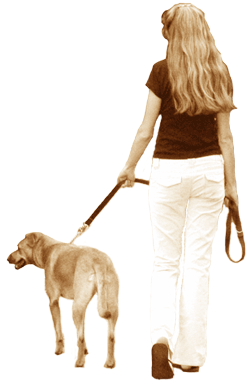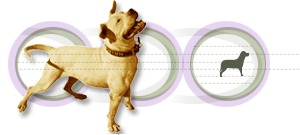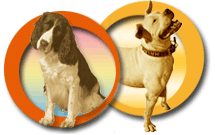|
"What
I do is totally illegal," says a seasoned Baltimore
dog walker as he ushers several dogs through the woods.
The reference to lawlessness isn’t about
what he does (walking dogs) but, rather, how he does it:
this dog walker—who prefers to remain anonymous—allows
the pets in his care to run free on public property in
violation of community leash laws.
Not all dog walkers tread on the wrong
side of the law, though. In her business, dog walker
Cynthia Elkey follows the rules. For reasons of safety,
both the dogs’ and people’s, Cynthia insists that her
pooches remain on-leash at all times.
Most dog-walking services, including
Cynthia’s, are geared toward people who are gone for
long periods during the workweek. Services are especially
helpful, she says, for those who have puppies or older
dogs that need to go outside more often, as well as for
those who have high-energy dogs.
For Cynthia, this occupation allows her to
earn money doing what she enjoys: Being outdoors, getting
exercise, and caring for dogs. It also capitalizes on
other strengths she has. "When I heard about this
occupation, I thought it’d be perfect for me,"
Cynthia says. "I’m very detail oriented,
self-motivated, like to work unsupervised, and can follow
a schedule."
Cynthia typically begins her work in
midmorning or early afternoon, driving to her clients’
homes. She takes each dog for a 15- or 30-minute walk
around the neighborhood and then brings the dog back to
its home, where she might give it a treat. Before moving
on to her next client, she always makes sure that the dog
has plenty of fresh water.
"It’s a very physical job,"
she says. "You need to get in and out of cars, put on
leashes, bend over to pick up after the dogs. We’re
outside a lot—in all kinds of weather." And walking
dogs, especially large or headstrong ones, can be
challenging in any conditions.
As an occupation, dog walking varies
significantly in the details. Some dog walkers,
particularly those in large urban areas, walk more than
one dog at a time. The terrain and duration of the walks
can range from a brief, leisurely stroll on city sidewalks
to long, brisk hikes through rural parks. Furthermore,
some dog walkers work independently; others have helpers
or work as part of a team.

Cynthia is part of the latter group; she
hires other dog walkers to help her respond to a growing
clientele. She and her assistants work Monday through
Friday, each of them walking two to six dogs every day. As
business manager, Cynthia establishes territories and
arranges her teams so that each dog walker works in one
area, usually close to his or her home.
Positioning workers and working with dogs
are only part of Cynthia’s duties. "You wear a lot
of hats with this business," she says. Cynthia also
is responsible for advertising and marketing to attract
new clients, hiring and managing employees, and doing
administrative tasks such as billing clients, paying
workers, and preparing taxes. In addition, she holds
monthly employee meetings to discuss dog health and
behavioral issues.
Another part of Cynthia’s job is to
train her assistants. Training may include instruction on
basic dog-walking techniques, such as the proper way to
hold a leash, and a review of Cynthia’s business
policies. There are no formal training requirements for
becoming a dog walker, however.
The Bureau of Labor Statistics (BLS) doesn’t collect
data specifically for dog walkers. Cynthia estimates that
most dog walkers make about $10 to $15 an hour, with
business owners earning more. She pays her employees a
commission—a percentage of the money that clients pay
for each walk. But it’s hard to make walking dogs a
full-time career. "It’s an ideal job for people who
want to work part-time during the middle of the day,"
she says, adding that many of her employees are
homemakers, retirees, or self-employed people.
Cynthia, like many dog walkers, entered
the occupation informally. In the mid-1980s, a friend
asked Cynthia if she would be interested in taking her dog
outside in the afternoons. Cynthia’s schedule allowed
her to be home during the day, so the arrangement worked
well. And the experience helped Cynthia realize the
potential for making a living by walking dogs.

Before embarking on any new career, of
course, people should research it—and dog walking is no
exception, says Cynthia. Occupational research should
include learning and reading as much as possible about
dogs, she says, especially their behavior and body
language.
The details of creating a business require
research, too, beyond learning the basics, such as how to
set up a spreadsheet to track income and expenses. Some
dog walkers may be required to have a business license,
for example, and many opt to become insured and bonded as
a safeguard for both themselves and their clients. Cynthia
recommends contacting local jurisdictions for specific
requirements. National and international associations also
can provide valuable information, she says, especially for
those who are just starting out.
In addition, prospective dog walkers
should realize that the work isn’t just a walk in the
neighborhood park. As with any caretaking job, dog walkers
need to be able to deal with problems their charges
present. One of the most common problems, says Cynthia, is
dogs that pull on the leash. Cynthia instructs her
employees to change directions when this happens, tugging
on the leash to get the dog to follow. "You can
almost keep going in circles doing this," she says,
"but the dog will usually learn from this corrective
behavior."
But some of what prospective dog walkers
need to succeed comes from neither research nor
instruction. "It takes a special person," says
Cynthia. "A good dog walker has patience and a love
of dogs, a sort of empathy for them."
 Top Top
|



